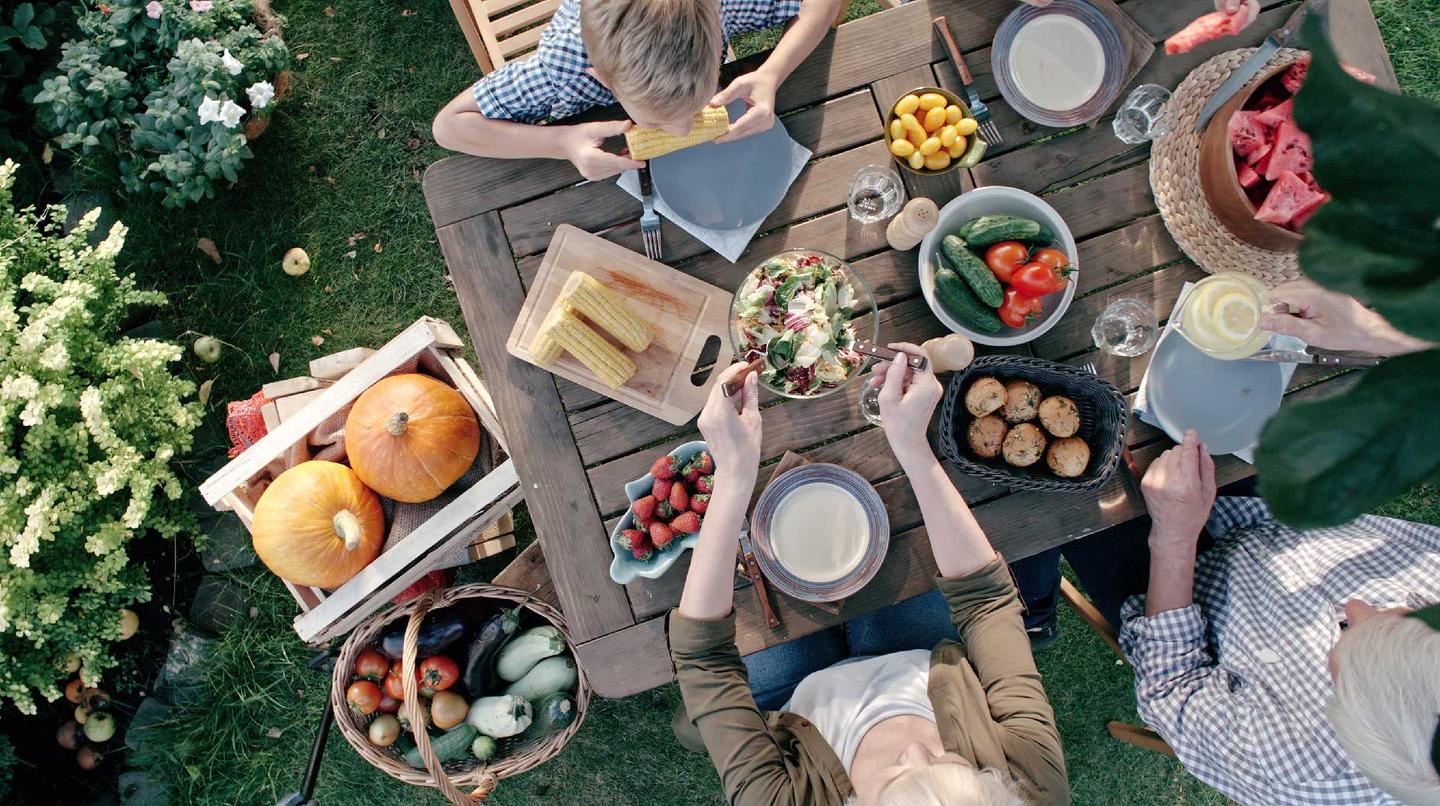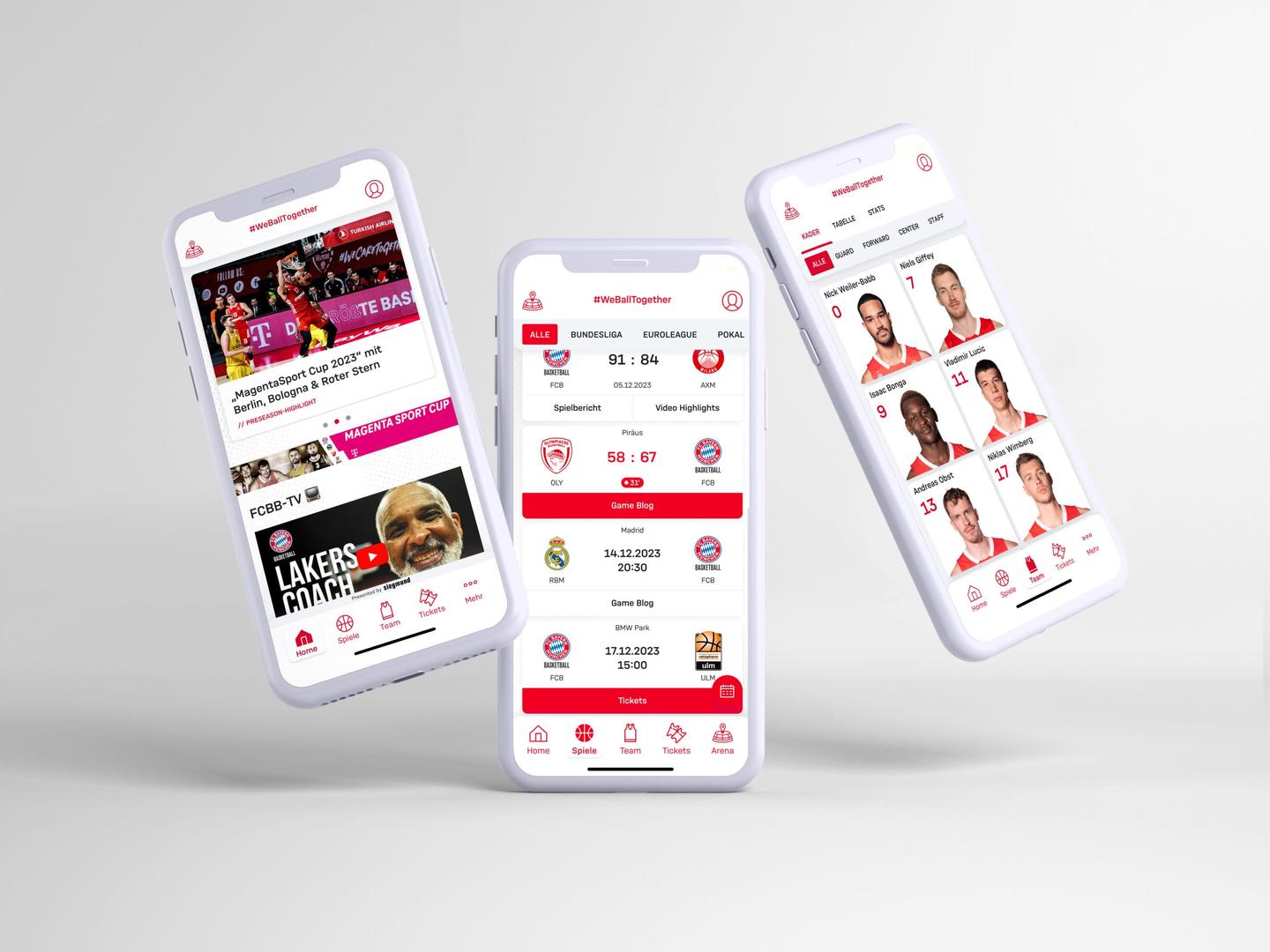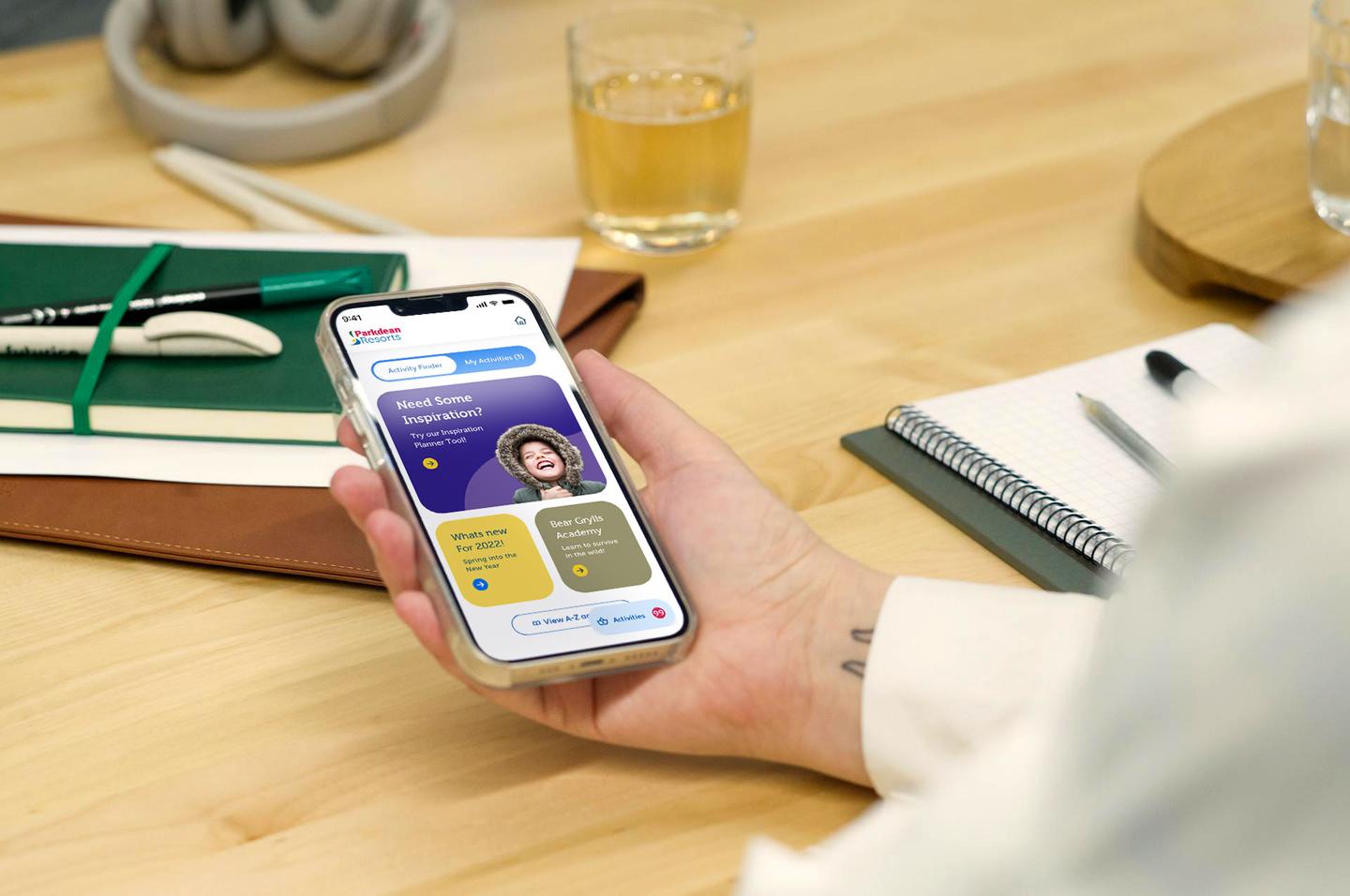Kesko: Leveraging Finland's most extensive grocery data and developing award-winning AI capabilities
In an era where AI continues to reshape every industry, Kesko's grocery retail division, in a long-term partnership with Futurice, has taken a significant leap forward in empowering its grocery customers to make healthier food choices easily with the help of their new feature – K-Hyvinvointi.

The feature within its award-winning K-Ruoka app utilizes AI and Finland's most extensive grocery data to offer personalized grocery shopping and recipe recommendations, guiding users toward healthier food options aligned with national dietary guidelines.
The challenge
Rising food prices have significantly affected Finnish shopping habits in recent years. Kesko's K-Barometer survey revealed that approximately 22% of consumers have shifted towards less healthy eating patterns in response to rising costs.
Globally, the public's desire to understand overall well-being is growing, and grocery shoppers are particularly interested in how their dietary choices impact their health. Simultaneously, there is a growing awareness of data sharing and its implications.
Data approaches used:
- Predictive analytics
- Customer segmentation
- Time series analysis
- Collaborative filtering
- State-space models
- Supervised learning
- Aggregated purchase data
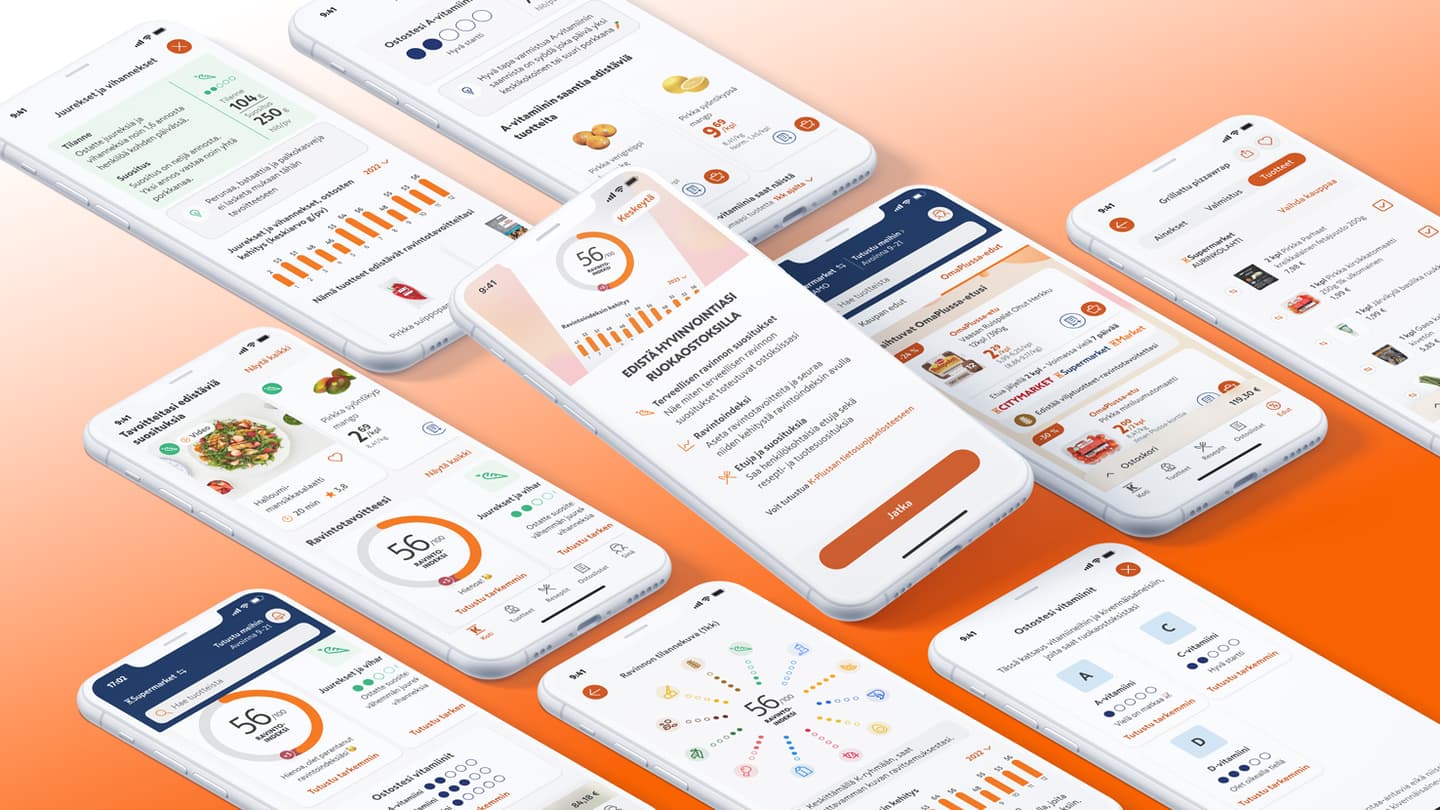
What we did
Previously, Kesko and Futurice used a user-centered service design process to develop and improve their popular K-Ruoka app – the new feature needed to integrate nutritional insights and action points seamlessly, offering value to its users at a glance.
The multidisciplinary team, which included Kesko's specialists, Futurice's designers and developers, and nutrition experts at Lääkärikeskus Aava, began concepting the new feature by diving into the nutritional analysis of Kesko's product database of over 100,000 items. The primary focus was developing frameworks and models for more nuanced nutritional details and categorization.
Based on the concept, Kesko developed in multi-party collaboration a nutrition index that shows each nutritional goal with a symbol and color, and a five-point scale provides an overview visualization of each category's status. At a glance, the user can see, for example, how the goal of eating more fish as a family unit is progressing. For product recommendations, the team used collaborative filtering ("customers who bought similar products to you also bought..."). This helps to find healthier options for the products that the customer is currently buying and which are still interesting to the customer.
Seasonality is a key ingredient when searching for recipes. K-Hyvinvointi uses state-space models to analyze the seasonality, ensuring recipe recommendations are personalized and remain relevant year-round, whether it's summer or winter.
The K-Hyvinvointi feature leverages the existing infrastructure of the K-Ruoka application, which automatically captures shopping data when a customer presents a Plussa card at the cash register. Supervised learning is employed to understand how the purchase history of a customer can be used to predict relevant recipes, allowing for the personalization of recipe recommendations to all customers. Upon activating the K-Hyvinvointi feature in the app, the user provides essential background information such as household size, personal diet preferences, nutritional goals, and food preferences.
The key element of the K-Hyvinvointi service is its easy onboarding, goal setting, and personalization. Goal setting is simplified upon feature activation, offering three automated options based on historical purchase data. The service also allows users to select the most relevant goals for them and their families. For those interested in more detailed information, background info on the national dietary goals and the studies behind them is easily available.
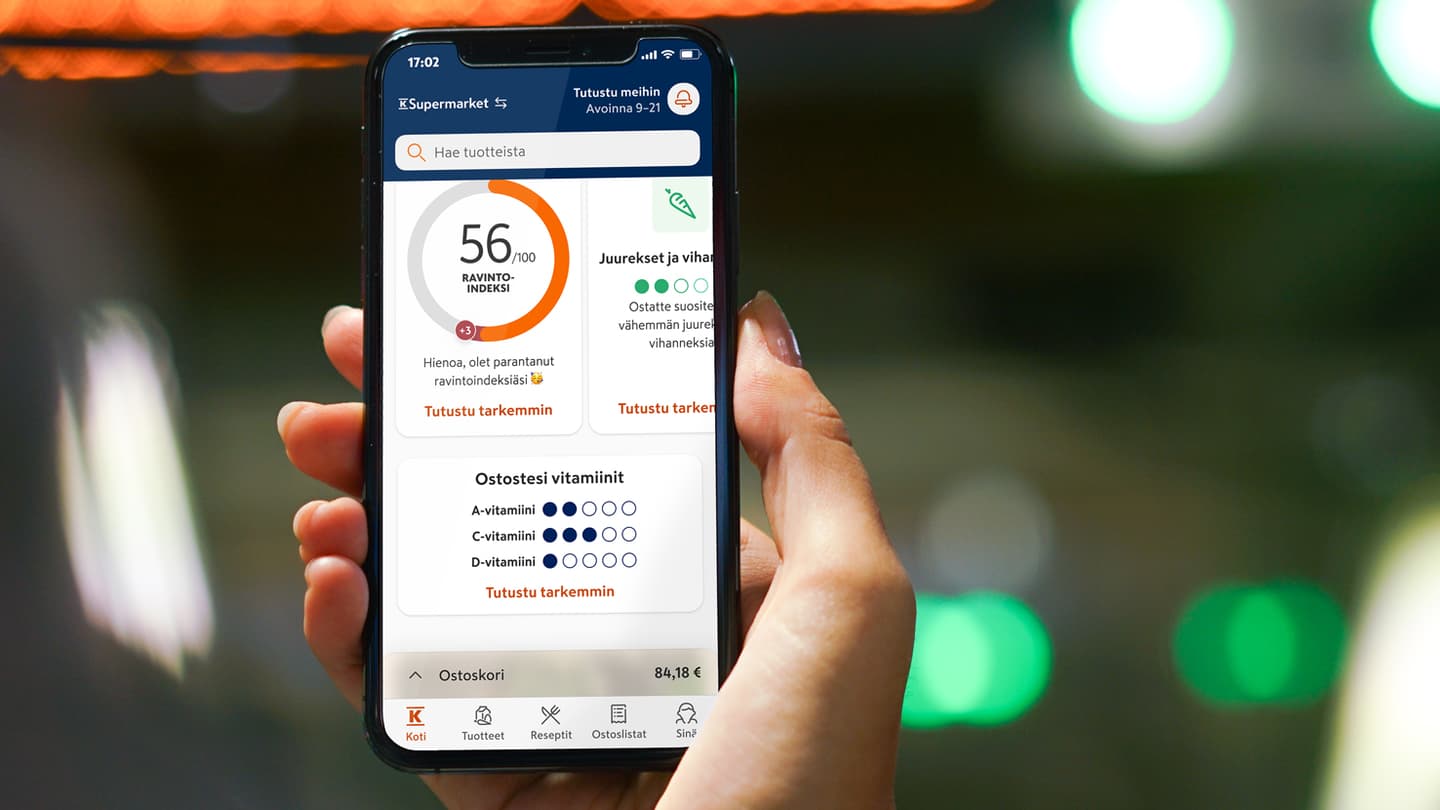
User experience was a critical aspect of the new feature. The goal was to create a seamless user interface for K-Hyvinvointi in an app that hosts multiple other features and information. The user testing group ensured the new feature was integrated smoothly into the K-Ruoka app. It evaluated how information was displayed, determining which details were important and which were less so. Simplifying the information was critical, aligning with Kesko's insight that customers often face time constraints when doing their food shopping.
From a technical implementation perspective, Kesko’s development team used Python for data science, and the models are containerized in AWS. The results are served by an API, where the product and recipe recommendations are calculated in real time.
Simplifying the information was critical, aligning with Kesko's insight that customers often face time constraints when doing their food shopping.
Why it matters
By leveraging AI and data, K-Hyvinvointi transforms its detailed grocery database into a service that empowers customers to make better choices. Users are highly satisfied with the feature's intuitive user experience and personalized shopping and recipe recommendations.
K-Hyvinvointi offers personally tailored recipe suggestions that are based on users' purchase histories and diets. Recipes are neatly categorized, enabling users to quickly find choices that match dietary needs – whether they're looking for vegetarian, vegan, lactose-free, milk-free, or gluten-free diets.
Moreover, the personal recommendations feature has attracted significant interest from users. It offers a Netflix-style carousel of suggestions, generating recommendations based on users' food shopping data and assigned goals. Users can easily add recipe ingredients directly to the digital shopping basket. This approach makes achieving nutritional goals – both in terms of shopping for ingredients and preparing meals – efficient and enjoyable.
K-Hyvinvointi feature is now expanding to include calculations of vitamins and other nutrients based on customer purchase data. For instance, it can calculate the amount of vitamin A obtained from consuming one large carrot daily per person and suggest new recipes to improve vitamin A intake. The work for developing the feature and its AI capabilities continues in collaboration with Futurice.
The K-Ruoka app is available on Google Play and App Store.
About Kesko
Kesko is a Finnish listed trading sector company. Kesko operates in the grocery trade, the building and technical trade and the car trade. Its divisions and chains act in close cooperation with retailer entrepreneurs and other partners. The K-Group’s strategic objective is to provide its customers with the best omnichannel customer experience, best digital services and a comprehensive e-commerce offering. It has approximately 1,800 stores engaged in chain operations in Finland, Sweden, Norway, Estonia, Latvia, Lithuania, Poland and Belarus.

